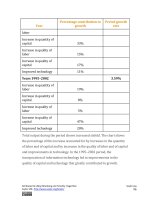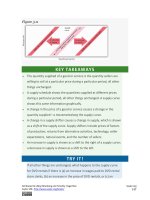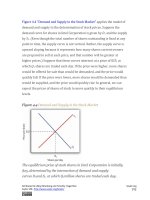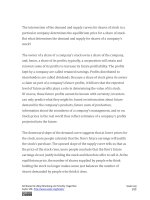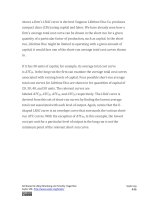Authors libby rittenberg 752
Bạn đang xem bản rút gọn của tài liệu. Xem và tải ngay bản đầy đủ của tài liệu tại đây (583.02 KB, 1 trang )
of Free Agency" gives player salaries as a percentage of total team
revenues in the period 1970–73 and in 1998 for men’s baseball (MLB),
basketball, football, and hockey.
The greatest gains came in baseball, which had the most restrictive rules
against player movement. Hockey players, too, ended up improving their
salaries greatly. By 2004, their salaries totaled 75% of team revenues. The
smallest gains came in basketball, where players already had options. The
American Basketball Association was formed; it ultimately became part of
the National Basketball Association. Basketball players also had the
alternative of playing in Europe. But, the economic lesson remains clear:
any weakening of the monopsony power of teams results in gains in player
salaries.
Sources: Gerald Scully, “Pay and Performance in Major League
Baseball,” American Economic Review, 64 (2) (December 1974): 915–30.
Gerald W. Scully, “Player Salary Share and the Distribution of Player
Earnings,” Managerial and Decision Economics, 25 (2004): 77–86.
ANSWER TO TRY IT! PROBLEM
The completed tables are shown in Panel (a). Drawing the supply
(S), MFC, and MRP curves, we have Panel (b). The monopsony firm will
employ three units of labor per day (the quantity at which MRP =MFC)
and will pay a wage taken from the supply curve: $30 per day.
Attributed to Libby Rittenberg and Timothy Tregarthen
Saylor URL: />
Saylor.org
752
